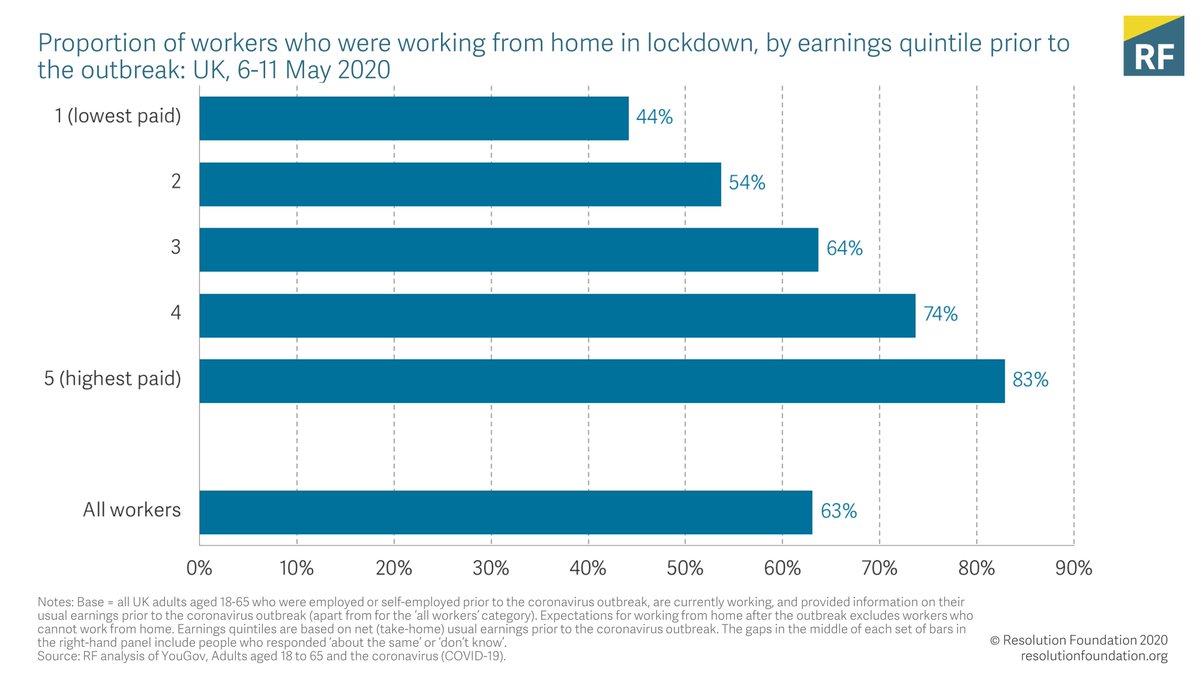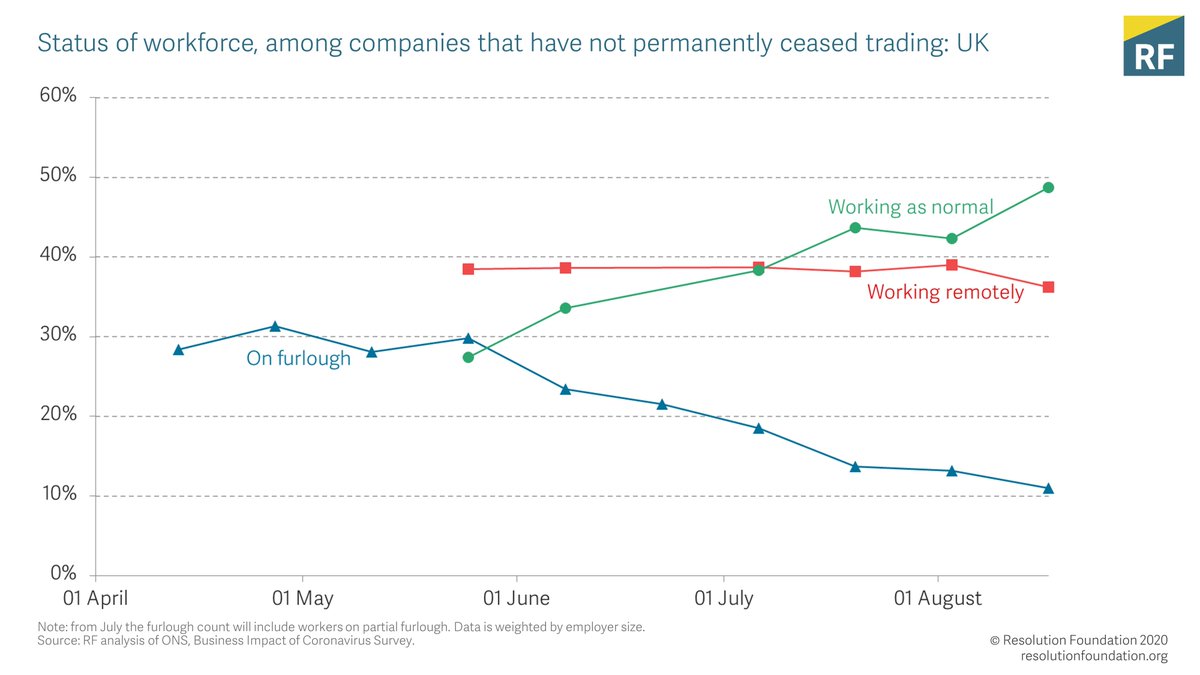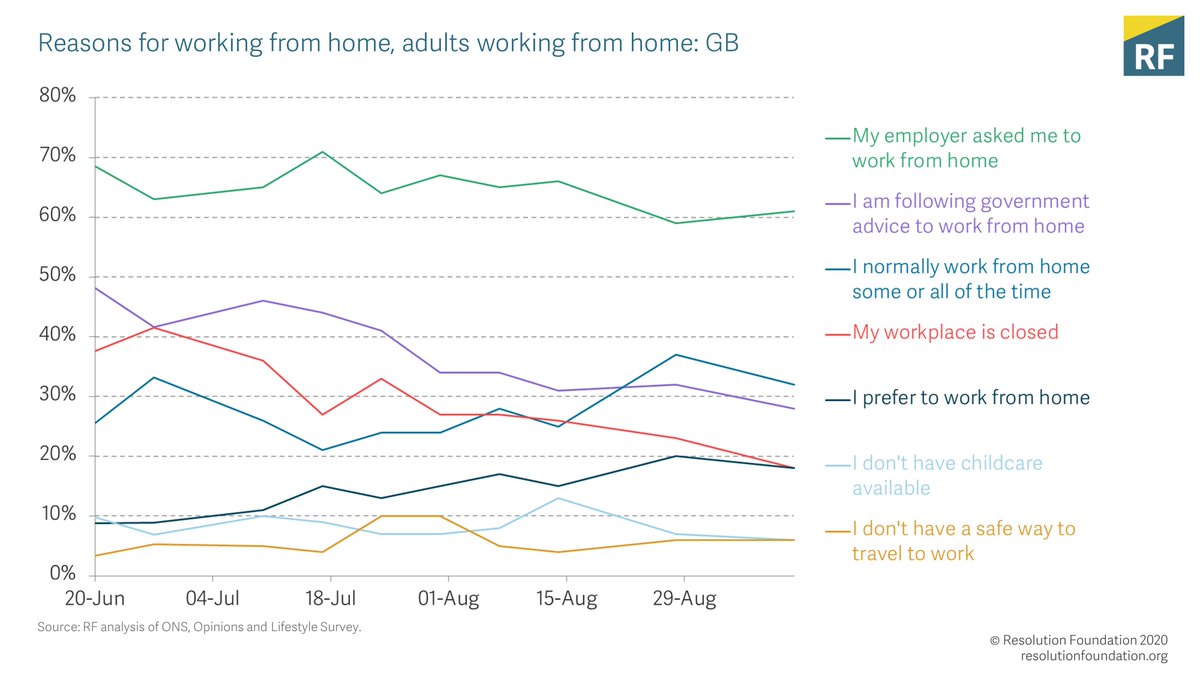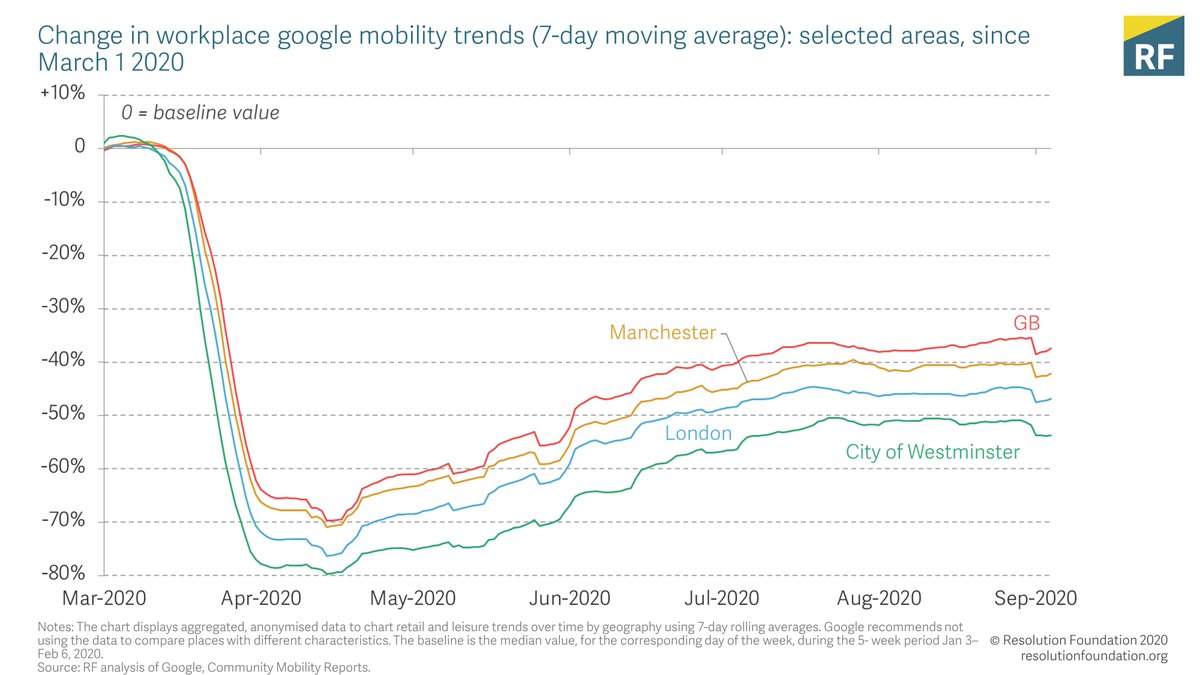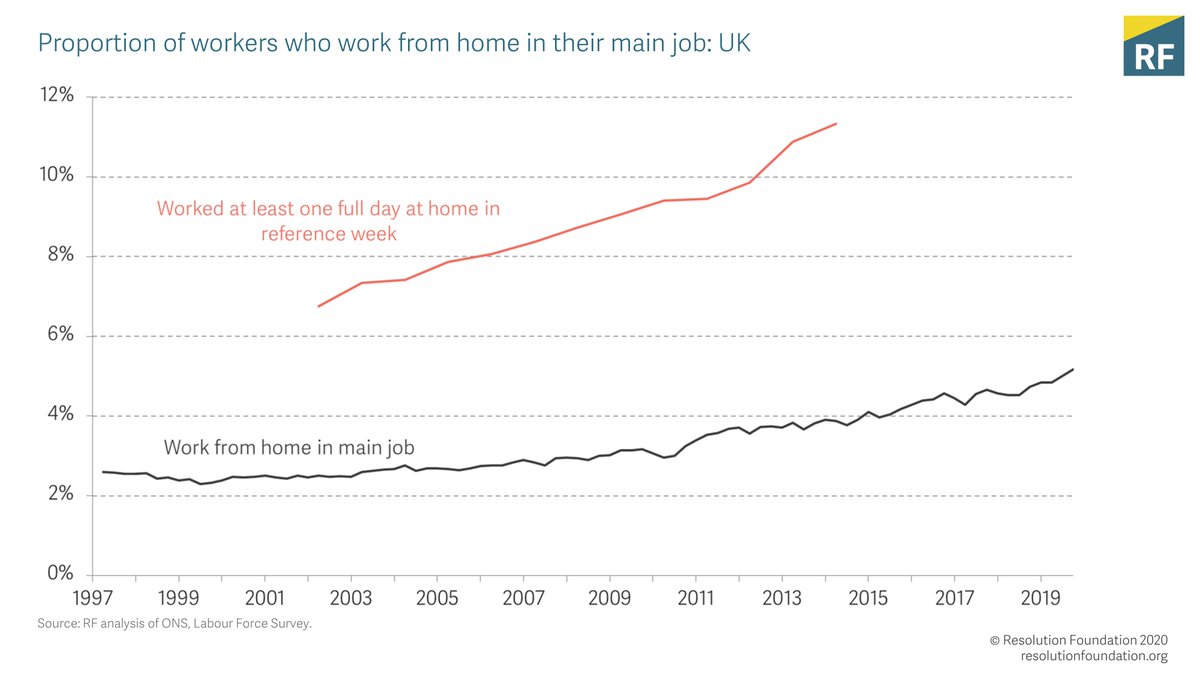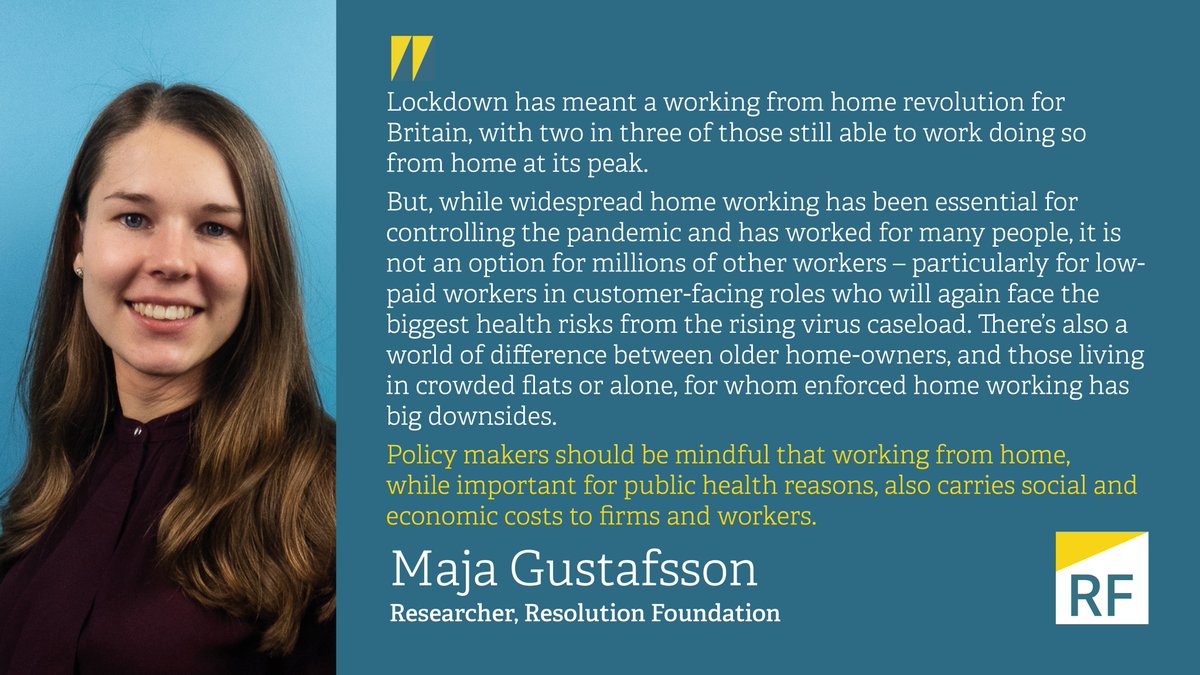Today, the Government’s public health guidance is set to shift from encouraging people back to the office to working from home if they can. So, what have we learnt about the big shift in working patterns over the past six months? THREAD:
The UK experienced a remote working revolution during lockdown, with two in three people able to work doing so from home. But it was an unequal revolution – with high-paid workers twice as likely to work from home as low-paid workers.
But obviously not all jobs can be done remotely. While almost three-quarters of ICT worked from home during August, fewer than one in ten hospitality workers were able to. The other consequence of course is that hospitality workers have been far more likely to be furloughed.
As more people have come off furlough and back to work, more people have returned to their workplaces. But – despite Government’s ‘get back to the office’ message from last month – there has been relatively little tailing off of remote working.
However, sustained high levels of remote working are not necessarily being driven by a widespread new found love of working from home. The vast majority of workers are simply following their employers’ guidance.
Continuing high levels of remote working are having a disproportionate impact on cities and city centres. Workplace mobility is down by around 35% across Britain, down by around 45% across London, and down by around 55% in Westminster.
Finally, its far too early to predict the end of the office. More likely is that this speeds up the move towards working a few days a week from home that has been going on for decades.

 Read on Twitter
Read on Twitter